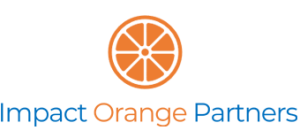Every day we read reports about problems in the Dutch housing market. According to the Atlas for Municipalities 2022, there is currently a shortage of approximately 400,000 homes in the Netherlands. In addition, the affordability of homes is under pressure due to rising rental and purchase prices, but also rising interest rates. And we want to make both the new construction and the existing housing stock more sustainable. Energy use in homes accounts for about 11% of global CO2 emissions, according to Our World in Data.
It is therefore not surprising that we are seeing more and more impactful initiatives within the housing market. These initiatives can roughly be divided into impact on climate, social impact and care, although there are certainly concepts that aim to achieve all three. We mention a few examples in this blog.
Social
On the social side, there are initiatives that focus on making owner-occupied homes affordable for middle-income earners. The middle segment has no access to social rental and owner-occupied homes are often out of reach due to the increased prices. This sounds like a big challenge, but in collaboration with municipalities, mortgage banks and through creative solutions, it is possible to make an owner-occupied home available to people who earn too much for social rent on the one hand and not enough for a standard owner-occupied home on the other. There are also forms in which the buyer buys only part of a house and pays a fee for the other part to a party who ‘co-buys’ the house.
Other initiatives are aimed at homeowners and specifically at the situation in which for many people a large part of their wealth is ‘tied up’ in their owner-occupied home in the form of equity. Carefully releasing this excess value gives people more financial scope. This enables them, for example, to make the house greener, thereby reducing housing costs, or to purchase necessary care for themselves or those close to them.
Climate
Impact on climate can be obtained by fully circular construction. For example, Madaster is an online platform that makes it possible to register materials and products. Data is recorded about all materials and products that are processed in an object, such as a bridge or building. This makes it possible to determine efficiently and on a large scale whether materials can be reused.
We also see that project developers are increasingly striving to obtain BREEAM certification for their buildings. The BREEAM 2020 version (the successor to 2014) pays much more attention to circularity, biodiversity, energy reduction, climate adaptation and health. An ‘excellent’ or even ‘outstanding’ BREEAM rating means that best practices or even innovative improvements have been applied.
Healthcare
Healthcare real estate is real estate that is designed to provide healthcare to people who need it. There are different forms of healthcare real estate, each of which is specifically designed for the care that is provided: nursing homes, residential care centers, home care (facilities), hospitals, rehabilitation centers. Dimensions such as quality and duration of care, accessibility, diagnostics, but also social interaction are important here. Given the well-known aging of our society and the shortage of medical care (demand versus supply), the degree of impact we create in this area will become increasingly important in the coming years.
What does this mean for investors?
For long-term investors, the above initiatives mean that there are more and more opportunities to also realize a positive impact within real estate investments, on a social level and/or on climate and/or healthcare. And that is important because real estate plays a crucial role in our society, but is also an important investment category for investors. Various real estate initiatives can also realize this on a sufficient scale, also for larger investors. In any case, we keep a close eye on the possibilities and developments.


